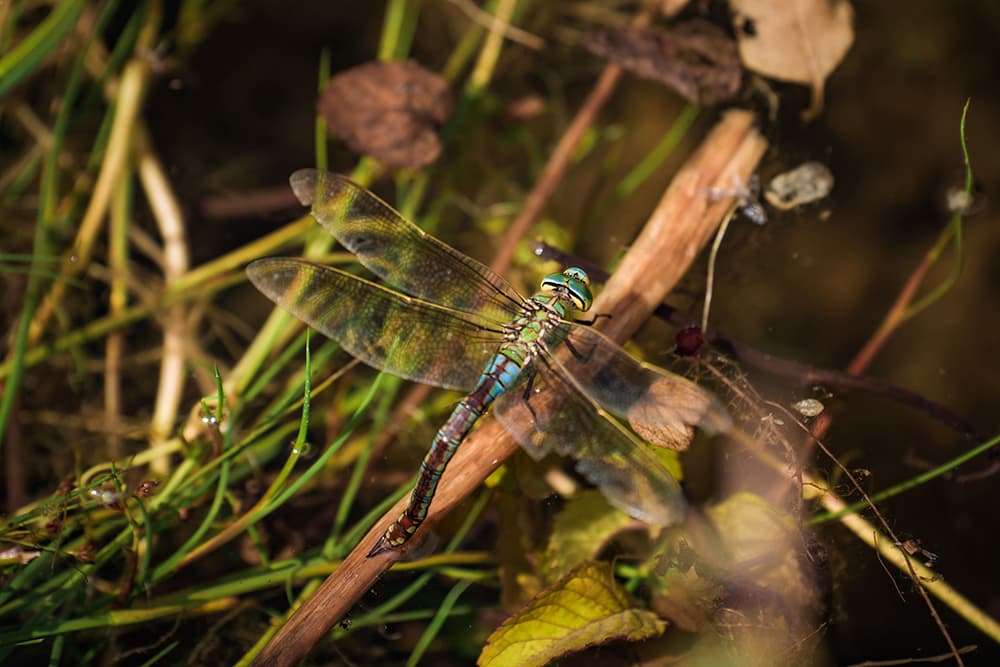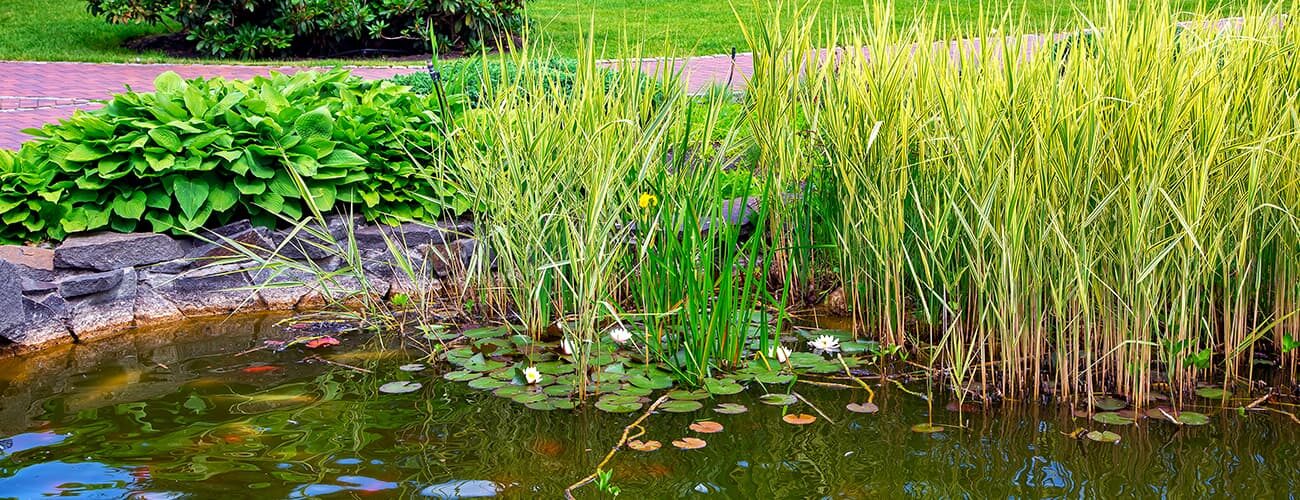A wildlife pond is the best thing you can have in your garden to support insects and birds. Ponds are an invaluable food source and habitat for garden mini-beasts and some of the larger varieties too. All life needs water, so if you have a pond, however small, you will find it is a magnet for everything furry, buzzing, hopping, flying and crawling.
During the winter months many creatures will have been hibernating in your pond or in a lighter state of torpor. Fish ‘go to sleep’ often near the bottom of the pond where the water is warmer and some amphibians nestle down in the mud at the bottom of the pond, while others prefer the moist margins where they shelter in the planting, or have a quick snack when they wake up.


As the water starts to warm, insects and animals will awaken and they will be hungry. You can start to feed fish a little more and if you are going to plant in and around your pond, now is the time. Nurseries will now have a variety of pond plants on sale, so it’s a good time to stock up.
When choosing your pond plants, ‘variety is the spice of life’, to keep things biodiverse for wildlife needs and always check the depth of the water that you are planting at, because different pond plants have varying tolerance for submersion.
These are the three main areas of your pond to think about when you are choosing plants:
Everyone loves waterlilies; they are the stars of the pond show. From the point of view of the health of your pond, it is less about the flowers and more about their large, spreading leaves, which shade the surface of the water.
This keeps the sunlight off and reduces the growth of algae, which can turn the water into green gloop. So waterlilies are great, but choose one that will grow to a suitable size for your pond and not take over. Waterlilies inhabit the deep parts of the pond and are rooted at the bottom. Other deep water plants float and are oxygenating. They release tiny bubbles of oxygen from their leaves into the water, keeping it fresh and providing a vital resource for other aquatic life forms. Nurseries will usually have a section of oxygenating plants and it is important that you buy these asap, if you are establishing a new pond. These are your pond ‘must- haves’.

The edges of your pond, where the water is shallow, can be planted with a variety of marginals. These plants enjoy a planting depth ranging from about 30-50cm below the surface of the water. They include deep marginals such as water irises, pontaderia and butomus. At the shallow margins you might like Caltha palustris, water forget-me-not or lobela cardinalis. And don’t forget some reeds and rushes for evergreen cover.

By Radio 4 Gardener’s Question Time’s











